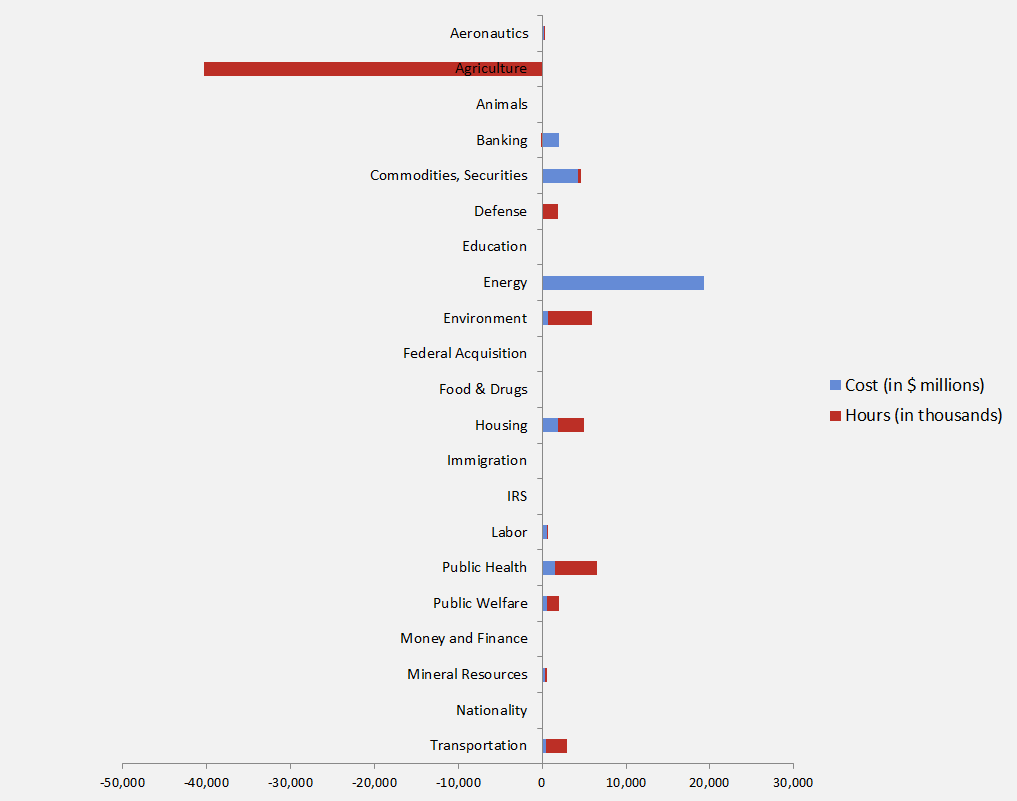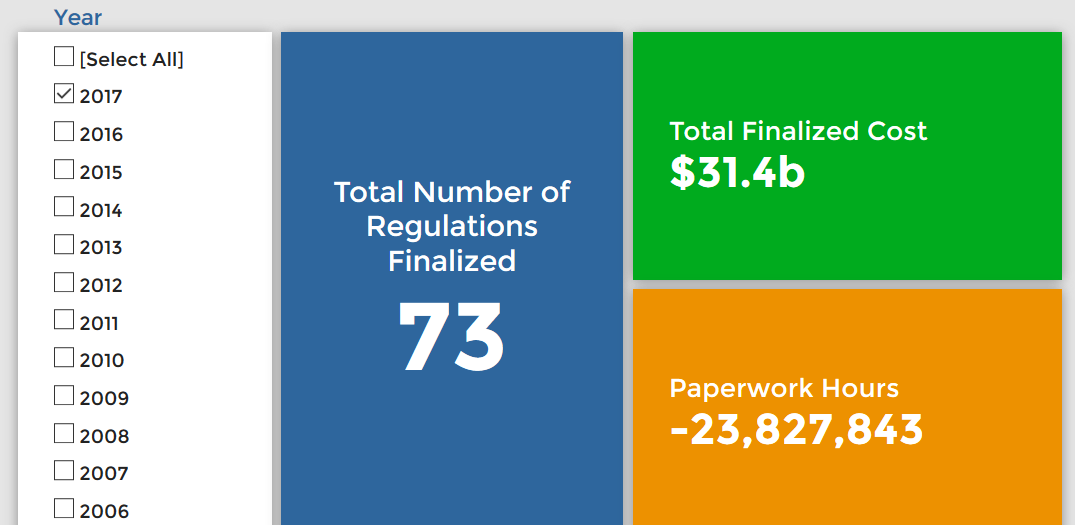Week in Regulation
May 1, 2017
Another Deregulatory Proposal
Regulatory activity is beginning to return to normal after the “freeze,” as five agencies now have regulations under review at the White House. This week, there were just three notable rulemakings, with one significant proposed rule that aims to reduce costs and paperwork burdens. Total costs inched upwards by $66 million, but paperwork declined by more than 25,000 hours. The per capita regulatory burden for 2017 is $442.
Regulatory Toplines
- New Proposed Rules: 25
- New Final Rules: 50
- 2017 Total Pages of Regulation: 20,240
- 2017 Final Rules: $31.39 Billion
- 2017 Proposed Rules: $111.6 Billion
The American Action Forum (AAF) has catalogued regulations according to their codification in the Code of Federal Regulations (CFR). The CFR is organized into 50 titles, with each title corresponding to an industry or part of government. This snapshot of final rules (a change from earlier versions) will help to determine which sectors of the economy receive the highest number of regulatory actions.
Two airworthiness directives were the only final rules that imposed costs this week, but the administration did propose a significant rule for the “Hospital Inpatient Prospective Payment System.” This is often referred to as a “transfer” rule and it does move $3.1 billion from the federal government to Medicare providers. Not unlike other transfer rules, however, it does estimate costs and benefits; in this instance, reduced costs of $0.8 million and 25,000 fewer paperwork burden hours.
Tracking Regulatory Modernization
The significant transfer rule, discussed above, is a major rule and qualifies under the administration’s one-in, two-out regulatory budget. If finalized, it could count as an “out,” since it reduces, albeit slightly, costs. To date, the administration has still not published a final significant rule that increases regulatory burdens.
For CRA resolutions, the House and Senate have both passed 13 CRA resolutions, with the Senate passing 13 total and the House 15 in all. President Trump has signed 13 and Congress and the administration have eliminated $3.7 billion in total regulatory costs and 4.2 million paperwork burden hours. There are two additional House CRA approvals on which the Senate has not voted, including a notable methane flaring measure ($1.8 billion in costs). To date, there have been more than 30 resolutions of disapproval introduced.
On regulatory budget implementation, below are the agencies that have accrued annual savings and are technically compliant with the president’s one-in, two-out budget:
- Defense: $400 million
- Interior: $360 million
- Education: $100 million
- Labor: $78 million
- HHS: $0.02 million
All non-DOL figures are the result of CRA resolutions of disapproval. Given their historic regulatory output, AAF can predict that Defense, Interior, and Education will likely meet the goal of $0 in net regulatory costs by the end of this fiscal year.
Affordable Care Act
Since passage, based on total lifetime costs of the regulations, the Affordable Care Act has imposed costs of $53 billion in final state and private-sector burdens and 176.9 million annual paperwork hours.
Dodd-Frank
Click here to view the total estimated revised costs from Dodd-Frank; since passage, the legislation has produced more than 74.8 million final paperwork burden hours and imposed $38.5 billion in direct compliance costs.
Total Burdens
Since January 1, the federal government has published $143 billion in compliance costs ($31.39 billion in final rules) and has cut 19.8 million paperwork burden hours (due to 23.8 million in reductions from final rules). Click below for the latest Reg Rodeo findings.












